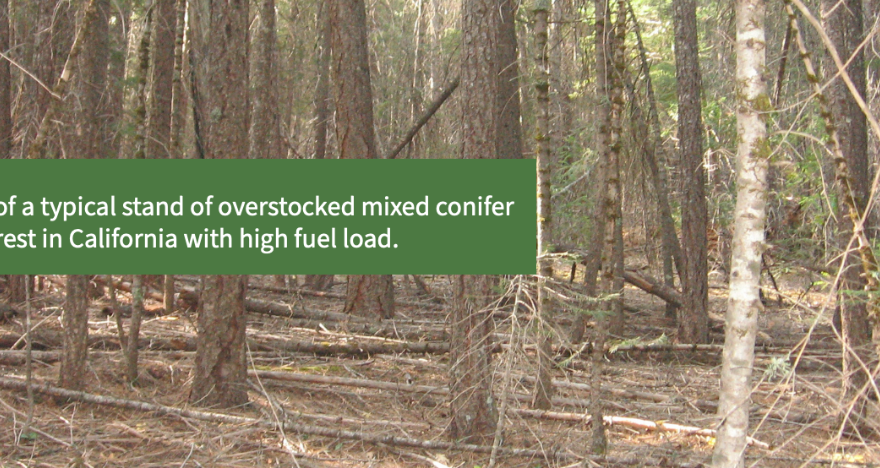Sept. 2020 Science Corner | “Paying for Forest Health: Improving the Economics of Forest Restoration and Biomass Power in California”


Their recent report, Paying for Forest Health: Improving the Economics of Forest Restoration and Biomass Power in California, highlights the need for community-scale bioenergy facilities and businesses that turn forest waste into forest products such as wood chips, firewood, posts and poles, mass timber, and biochar to drive forest restoration.
Authors: Camille Swezy, Kyle Rodgers, Jonathan Kusel, Ph.D.
Interview and story by: Micah Elias
The threat of wildfire is on many minds in the Western US as autumn approaches. It is no secret that one of the strategies to reduce high-severity wildfires in dry western forests is through forest restoration work – primarily a combination of thinning overgrown vegetation and reintroducing healthy, low intensity, prescribed fires. Although thinning produces a lot of woody biomass, restoration projects are generally not financially sustainable due to minimal markets for this residual biomass. In response, there are a number of organizations that have advocated for the need to foster industries that can turn the biomass waste stream into value.
Jonathan Kusel and his team at the Sierra Institute for Community and Environment are addressing this issue by studying the economics of forest restoration. Their recent report, Paying for Forest Health: Improving the Economics of Forest Restoration and Biomass Power in California, highlights the need for community scale bioenergy facilities and businesses which turn forest waste into forest products such as wood chips, firewood, posts and poles, mass timber, and biochar to drive forest restoration.
Dr. Kusel commented, “The extent to which we can identify uses and add value to the lowest value material is a large measure of how successful we will be in doing forest restoration. Creating value from non-merchantable timber in turn creates a feedback loop to do more work.”
The report highlights several important considerations: 1) the need to generate efficiencies by planning at the landscape level and issuing long-term contracts to reduce treatment costs; 2) the need for both public and private investment in biomass energy to utilize the lowest value material, while co-locating biomass energy plants with other forest products businesses; and 3) the need to monetize and pay for forest ecosystem services like water quality and carbon sequestration in parallel with pathways to market wood products.
Dr. Kusel is confident in this roadmap, saying that “Sustainable resource management and restoration in California will not succeed without investment in the wood utilization infrastructure and development of markets that will increase the value of low-value wood products.”
Investment in these nascent industries can also act as powerful engines for rural economic development. Many of the barriers to scaling these businesses can be solved by financing collaborative business models called wood product campuses, which house complimentary operations that benefit from working side by side.
Dr. Kusel pointed out that “Typically rural communities do not have the capabilities to market a raft of different products at the scale at which they are producing, which is why we think the best approach is cooperating with partners who have shared commitments to quality products.”
A combination of collaborative business models, investments in products and processes which utilize non-merchantable biomass, as well as payments for ecosystem services will help to drive forest restoration. Forest Resilience Bonds can be used to assure biomass supply to companies, a critical step in fostering these nascent markets. In turn, healthy wood supply markets improve the desired outcomes of our Forest Resilience Bonds. These efforts create jobs while uplifting our rural economies while making communities more resilient with clean water, clean air, and healthy forest ecosystems.